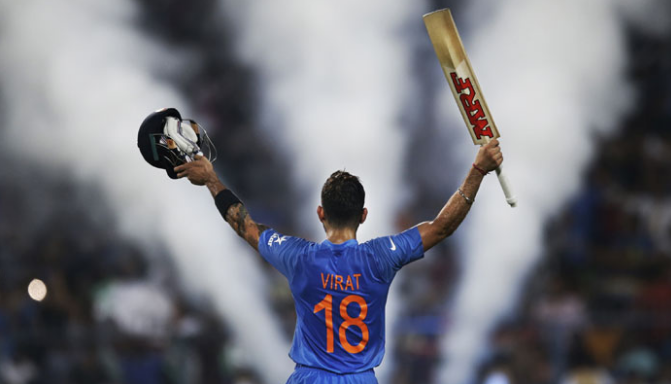On the Ball | Numbers Finally Catch Up With Test Cricket

The Chief Executive Committee of the ICC has decided that the there will be numbers and names displayed on jerseys of players involved in the World Test Championship (just like in limited-overs cricket), to be contested by the top nine Test-playing sides.
The match-eve training session was just winding down, the Indian cricket team players trooping into the dressing-room, out of breath after a strenuous fielding drill. Bare-headed and sporting a smile as he exchanged pleasantries with familiar faces among the media corps, VVS Laxman stopped dead in his tracks when a senior journalist from England addressed him.
“Hello Wasim, how are you doing?” the veteran asked the man who had, long before then, wowed the cricket world with his magical 281 at the Eden Gardens against Australia. That was in March 2001; almost five years on, ahead of the last ever Test at the old VCA Stadium at Civil Lines in Nagpur, he was being mistaken for Wasim Jaffer, the opener with whom he bore no facial resemblance.
Laxman being Laxman, quickly composed himself, smiled sweetly at the Englishman and replied, “I am Laxman and I am well, thank you. Hope you are well too.”
Also Read | Gautam Gambhir Joins BJP; Could Contest Lok Sabha Elections, Say Reports
Someone there suggested, largely in jest, “Maybe it’s time we started having names and numbers on Test jerseys. And on practice shirts as well.” At least one part of that suggestion is finally set to see the light of day.
When England and Australia do battle in the Ashes from August 1 this year, as the first act of the inaugural World Test Championship, the players involved will sport their names, and numbers, on the back of their white shirts, just like they do in all limited-overs internationals and in domestic first-class cricket in some parts of the world. Mandated by the Chief Executive Committee of the International Cricket Council, this will be applicable to all matches in the World Test Championship, to be contested by the top nine Test nations in a two-year cycle between 2019 and 2021. Of course, nothing stops Zimbabwe, Afghanistan and Ireland, who are not part of the Test Championship, from adopting the same guidelines.
Primarily a spectator-friendly exercise aimed at ready identification of the protagonists involved and enhancing connect with the action, the long overdue move will have greater commercial ramifications too with players’ Test jerseys soon to be in as much demand as the various limited-overs hues.
Also Read | On the Ball: India’s Series Loss Eye Opener On Curious Nature of Elite Sport
Especially in the helmeted era in which most batsmen are understandably reluctant to shed protective headgear even against the friendliest of bowlers, any and all identification cues are most welcome. One might argue that a Virat Kohli, for instance, or a Dale Steyn, is easily recognizable and therefore doesn’t need name-tagging, but that’s splitting hairs.
It’s almost a given that not too many fans in the Caribbean will readily recognise a Mayank Agarwal or a G Hanuma Vihari under the helmet — or even when he sliding around in the field — when India travel there to play Test cricket later in August.
While the issue of names is straightforward enough, the numbers can prove a little trickier. Already, most countries have small-sized numbers on the front of the shirt, near the chest, and the side of the cap, denoting the player’s place in history.
Also Read | Indian Cricket Team ‘Caps’ Irony With Nike-Made Valour
Sachin Tendulkar sported 187 on his Test shirt because he was the 187th player to represent India in that format. His corresponding numbers in One-Day International and Twenty20 International cricket are 74 and 11 respectively, though the number on the back of his India blue shirt was almost exclusively the famous 10, and very occasionally 99. It’s not a deal-breaker, but uniformity in numbers at the back of the Test shirt — and the sweater, which generally is both nameless and numberless — won’t be out of place. The player’s cap number might not be the worst choice.
Test cricket, it appears, is set to be buffeted by the winds of change. While the name-number development is mainly a cosmetic exercise, other recommendations of greater cricketing import have emanated in recent times from the World Cricket Committee (WCC) which falls under the ambit of the Marylebone Cricket Club (MCC), the custodians of the Laws of Cricket. The WCC is an independent body comprising hugely respected former and present cricketers and administrations from around the world. Its recommendations are often, but not always, adopted by the ICC, which has its own Cricket Committee headed by Anil Kumble.
It’s debatable, however, if its proposal to standardize the ball for the World Test Championship will find universal acceptance. Three brands of red balls are in use now — India favour the SG Test ball, England and Windies have plumped for the Dukes, and the rest play with the Kookaburra, though Bangladesh occasionally switch to the SG, especially when they host teams from outside the subcontinent.
Each of these little red spheres comes with its own eccentricity, asking probing questions of visiting batsmen as well as bowlers. The standardization of the ball, despite vastly differing soil, pitch and climatic conditions, could end up being an own-goal in that it will suck some of the charm out of Test cricket by breeding a self-defeating sameness.
India are due to host South Africa in a three-Test series and Bangladesh for two matches in October-November this year, giving them little chance of trialling the Dukes ball in first-class cricket. For now, it’s safe to assume that the first WTC at least will not see the same sphere of destruction in vogue.
Also Read | IPL Form Will Matter for World Cup Selection: BCCI Goes for a Reverse Hit
The WCC, which met in Bangalore not long back, also proposed the introduction of a free-hit in Test cricket for a no-ball infraction, similar to the existing practice in limited-overs cricket. Considering that the longest format has already forayed into day-night games and four-day Tests are being seriously contemplated, a free-hit won’t necessarily be the most damaging introduction. The extra delivery and the runs that come off it might not influence the outcome of a Test to the extent that they do in white-ball matches; if the free-hit adds to the excitement and inculcates greater discipline among bowlers, then why not?
Ditto for the countdown clock aimed at speeding up proceedings between overs, at the fall of a wicket and at drinks breaks. Despite the preponderance of results in Test cricket in recent times, over-rates have been abysmally poor even in Asia, where spinners are in operation far more than anywhere else in the world. The potential for penalties beyond fines and suspensions — the WCC has recommended awarding five penalty runs after due warning — could just be the spur players need not to dawdle on the field.
In the last few years, Test cricket has showed signs of emerging from the cocoon of time warp and jettisoning the safety net of ‘tradition’ that it had surrounded itself in. By placing entertainment at the forefront without compromising on the fibre of the format, it’s gradually moving towards a happy marriage that should allow it to continue to remain relevant despite the burgeoning slam-bang threat of the 20-over upstart, particularly.
Kaushik is a veteran cricket writer who has reported on over 100 Tests. He co-authored VVS Laxman's autobiography '281 and Beyond'.
Get the latest reports & analysis with people's perspective on Protests, movements & deep analytical videos, discussions of the current affairs in your Telegram app. Subscribe to NewsClick's Telegram channel & get Real-Time updates on stories, as they get published on our website.
























